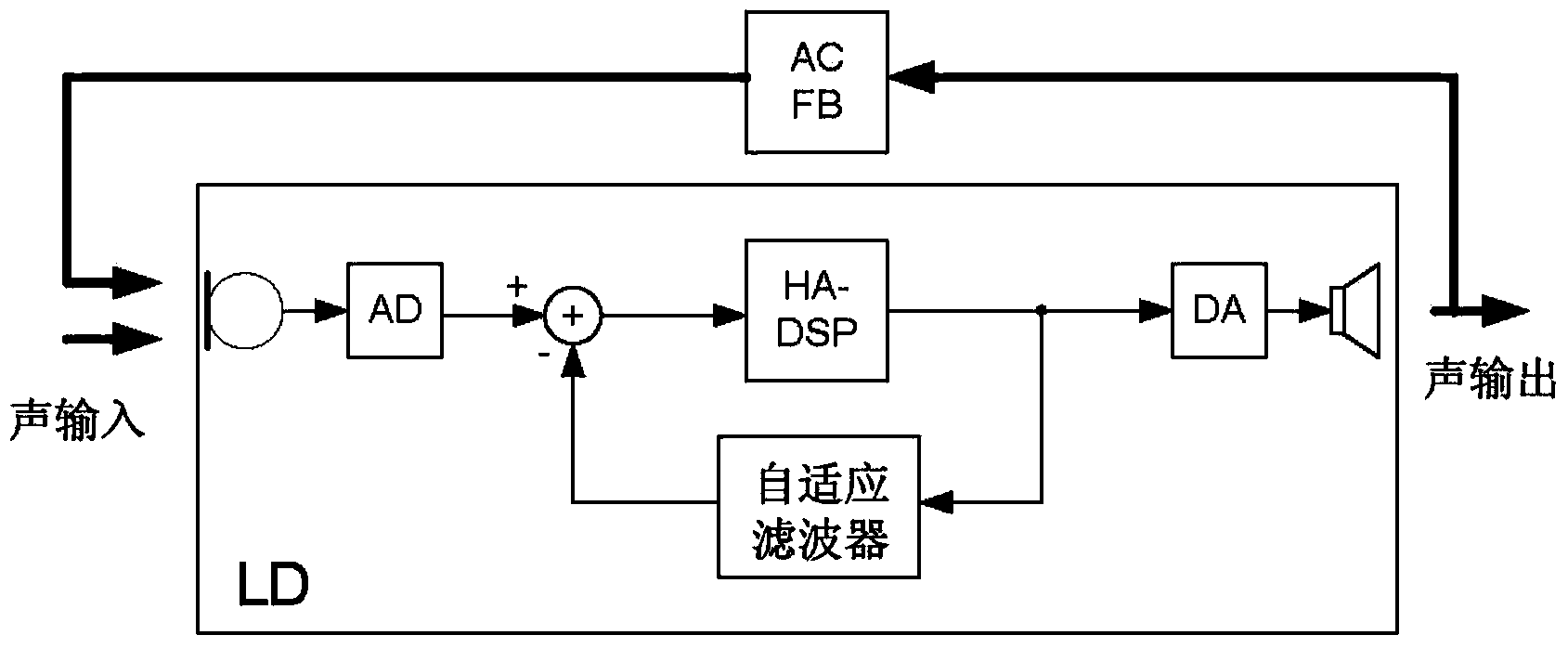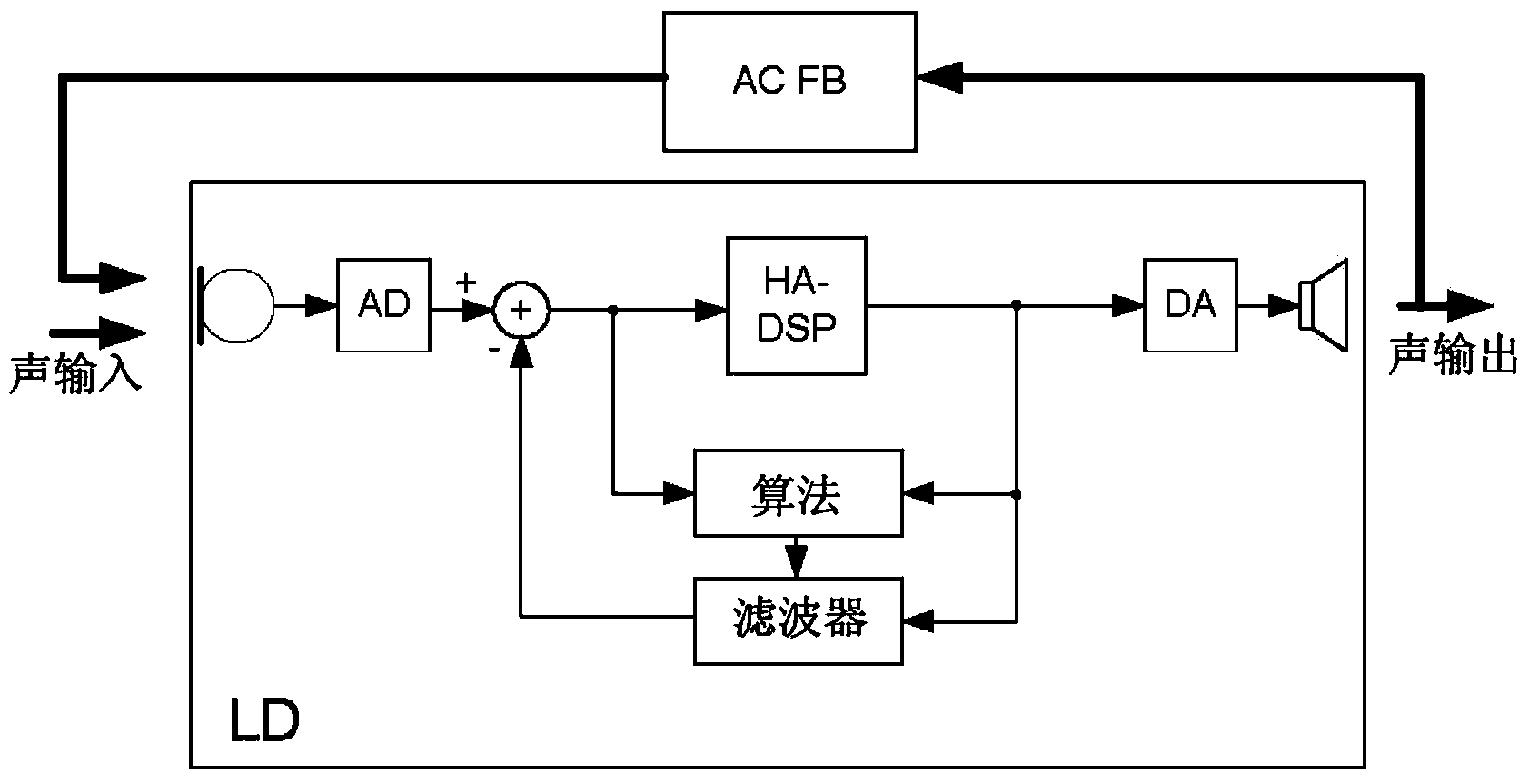A hearing assistance device with brain-computer interface
A communication device and user interface technology, applied to hearing aids, devices for obtaining desired pointing characteristics, implanted hearing aids, etc., can solve problems such as unfixed electrodes, large brain-computer interface size, and limited equipment measurement accuracy
- Summary
- Abstract
- Description
- Claims
- Application Information
AI Technical Summary
Problems solved by technology
Method used
Image
Examples
Embodiment Construction
[0079] Figures 1a-1d Four embodiments of hearing devices are shown. Figure 1a A simple hearing aid is shown comprising a forward or signal path from an input transducer to an output transducer, the forward path being formed therebetween and comprising a signal for applying a frequency dependent gain to the signal picked up by the microphone and boosting the Provided to the processing unit HA-DSP of the output converter. Hearing aid feedback cancellation systems (used to reduce or cancel acoustic feedback from the output of the hearing aid to the "external" feedback path (AC FB) of the input transducer) may include adaptive filters ( Figure 1b "Adaptive Filter" in ) which is controlled by a prediction error algorithm such as the LMS (Least Mean Square) algorithm to predict and cancel the portion of the microphone signal caused by feedback (from the hearing aid's receiver). Figure 1b and 1c An example thereof is shown. Adaptive filter (in Figure 1c , including a variab...
PUM
 Login to View More
Login to View More Abstract
Description
Claims
Application Information
 Login to View More
Login to View More - R&D
- Intellectual Property
- Life Sciences
- Materials
- Tech Scout
- Unparalleled Data Quality
- Higher Quality Content
- 60% Fewer Hallucinations
Browse by: Latest US Patents, China's latest patents, Technical Efficacy Thesaurus, Application Domain, Technology Topic, Popular Technical Reports.
© 2025 PatSnap. All rights reserved.Legal|Privacy policy|Modern Slavery Act Transparency Statement|Sitemap|About US| Contact US: help@patsnap.com



